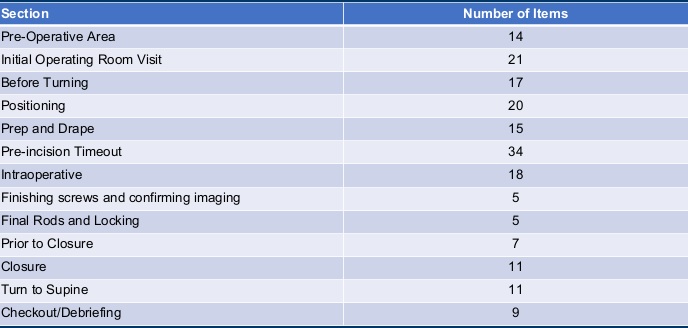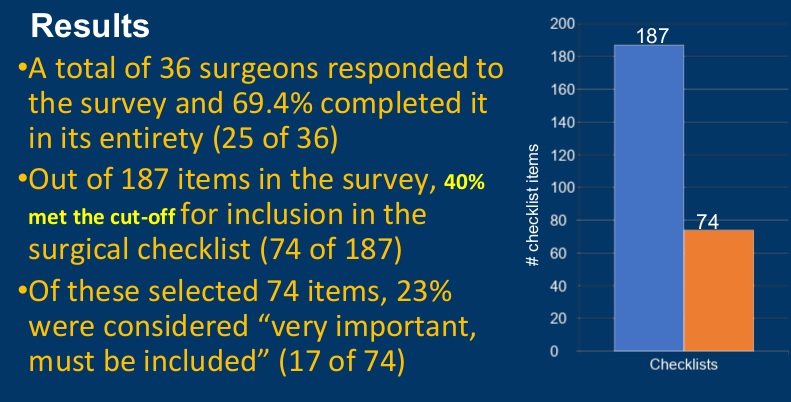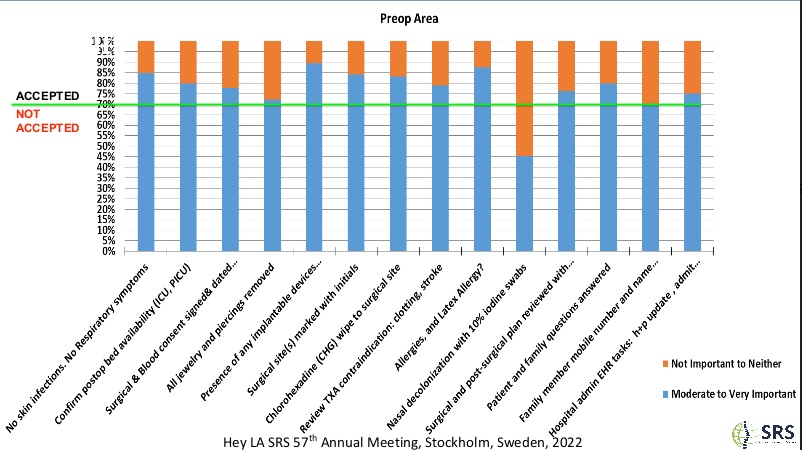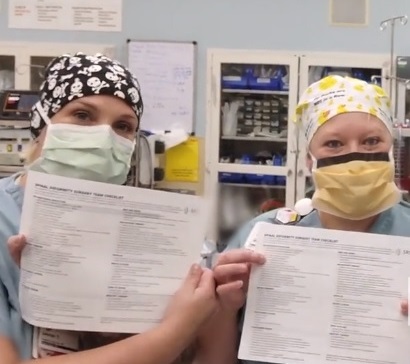“Everything we do benefits from a checklist,” says Dr. John Smith, Dr. Hey’s colleague and friend. Working with the SRS (Scoliosis Research Society) Safety and Value Committee and many other contributors over the years, Dr. Hey helped create the “SRS Surgical Checklist” and wants to share why he believes using a checklist is so important.
Electronic Checklist
Dr. Hey has been using an electronic checklist for many years. He developed a safety checklist web app platform, called 3Greens and continues to use it in his operating room. As a surgeon and a pilot, he took inspiration from aviation and wanted to bring the same level of safety and process into the OR.
By adopting a checklist in the OR, a surgeon can perform confidently knowing that each critical step has been completed. The checklist also creates an atmosphere of confidence and cohesion for the team, and most importantly increases patient safety.
The SRS Surgical Checklist
Using his learning from the 3Greens electronic checklist as a guide, Dr. Hey and his fellow SRS members created the SRS Surgical Checklist. Dr. Hey’s vision is for surgeons all over the globe to use the checklist. Dr. Hey has been using checklists in his OR for many years and when he talked to his peers and surgical teams, this is what they had to say.
“I think the checklist is super helpful because it keeps the entire team on the same page,” says scrub tech Lauren.
Scrub tech Don A. says, “The checklist was a great tool for us to communicate what our expectations were for the procedure and for each other.”
“Checklists enable every person in the room to speak up if they think a mistake has been done because they are following the checklist at the same time,” says Dr. Smith.
Howard J. PCT says, “It makes me feel safer about the whole process the patient is going through because everybody is being walked through the process.”
Here are 5 important reasons why Dr. Hey uses a checklist:
- Checklists make the surgical team feel confident.
- Checklists help set expectations.
- Checklists give responsibility to everyone on the team.
- Checklists improve team morale and promote communication.
- Checklists keep the patient safe!
“It is so comforting as a parent to see how many things are being done to keep my daughter safe. Every doctor at every hospital should use this,” says a Hey Clinic parent of a surgical patient.
SRS Annual Meeting Presentation
Dr. Hey recently presented a paper entitled “Development of a Spinal Deformity Surgical Checklist: An SRS Safety and Value Committee Survey Investigation in Stockholm, Sweden at the SRS 57th annual meeting in September.
Motivation – Why Use a Checklist?
As surgeons we are the captain of the ship, the pilot of the plane overseeing the well being of many PRECIOUS PEOPLE – Patients, families and team members.
Deformity surgery can be very effective, but is a long, complex, high-risk multi-step procedure with many team members, and can have a relatively high complication rate
We know that checklists can help decrease morbidity and mortality using the WHO checklist, but checklists like this lack the specificity to help us to prevent the errors and complications we face in spinal deformity surgery.
Checklist Pilot Study
In response to this need, our Hey Clinic OR teams, and other SRS surgeons started a new safety journey 6 years ago. I started by identifying the critical checkpoints from the preop area to the patient leaving the OR. Next, we built a flexible checklist system web app platform to mimic the system I use as a pilot. We then created a series of checklists – one for each checkpoint – for performing pediatric and adult spinal deformity surgery, and gradually improved that content with each surgery, and input from other SRS surgeon teams.
We were then able to show in this pilot study that it was feasible to get other scoliosis surgeons using this platform and checklists, and also showed an improvement in team dynamics.
Over the last 6 years, I’ve used this checklist system for ALL of my pediatric and adult spinal deformity surgeries, totaling over 1,000 cases, and has proven to be indispensable for our patients & teams. A small group of SRS surgeons have also been using the checklist system with similar checklists.
Creating a Checklist That Can Be Used Worldwide
The question for this study is can we help create a shorter version of my checklist that may help onboard more SRS and other spinal deformity surgeons worldwide to improve safety.
Study Design, Hypothesis and Methods
The study design is an electronic survey administered to SRS Safety & Value Committee Members.
Our hypothesis was that a survey investigation may aid in the development of a safety surgical checklist specific for deformity patients of all ages.
An electronic survey of all of my checklist items was created, broken down by the 13 checklist sections, where each item could be rated on a 5-Point Likert scale from not important at all up through moderately and “very important, must be included” This survey was then distributed to the members.
Items deemed moderate or very important were grouped together. If 70% of the respondents agreed that the item was moderately or very important, it was deemed to be included in the shortened checklist.
Checklist Sections
Here are the checklist sections with the number of checklist items in my original checklist that were included in the survey.

Results

This graph shows the percent reduction of checklist items by each checklist section. Very important items included checking for allergies, skin infections and respiratory status in the preop area, reviewing the surgical plan and positioning with the OR staff, making sure endotracheal tube was securely fastened, and that 2 bite blocks were in place before turning, ensuring neuromonitoring wiring, baselines and final readings, encouraging team members to speak up, and checking that the patient is moving both lower extremities before leaving the OR.


Conclusions
There was good surgeon agreement on 10 surgical checkpoints.
- The number of checklist items were significantly reduced.
- 23% of the of checklist items were deemed very important.
- Surgeons actually acknowledged the importance and chose to include the debrief.
- This process has led to the new official SRS Spinal Deformity Team Checklist last month.
Let’s work together in future safety and value improvement studies with surgeon teams from around the world. Our hope is to be able to show how standard work plus teamwork can actually decrease complications AND save time and other resources while helping with staff training, retention and satisfaction, and helping us all enjoy our healing missions together with confidence. Together, we can help each other ensure that 100 percent of surgery teams are doing everything humanly possible to keep our patients safe and get them to their desired goal.
For more information on how you can get involved in improving quality, safety and resilience through training, mentorship and community visit CareGuard.org.
Join the team of healthcare workers determined to put the “care” back into healthcare.

